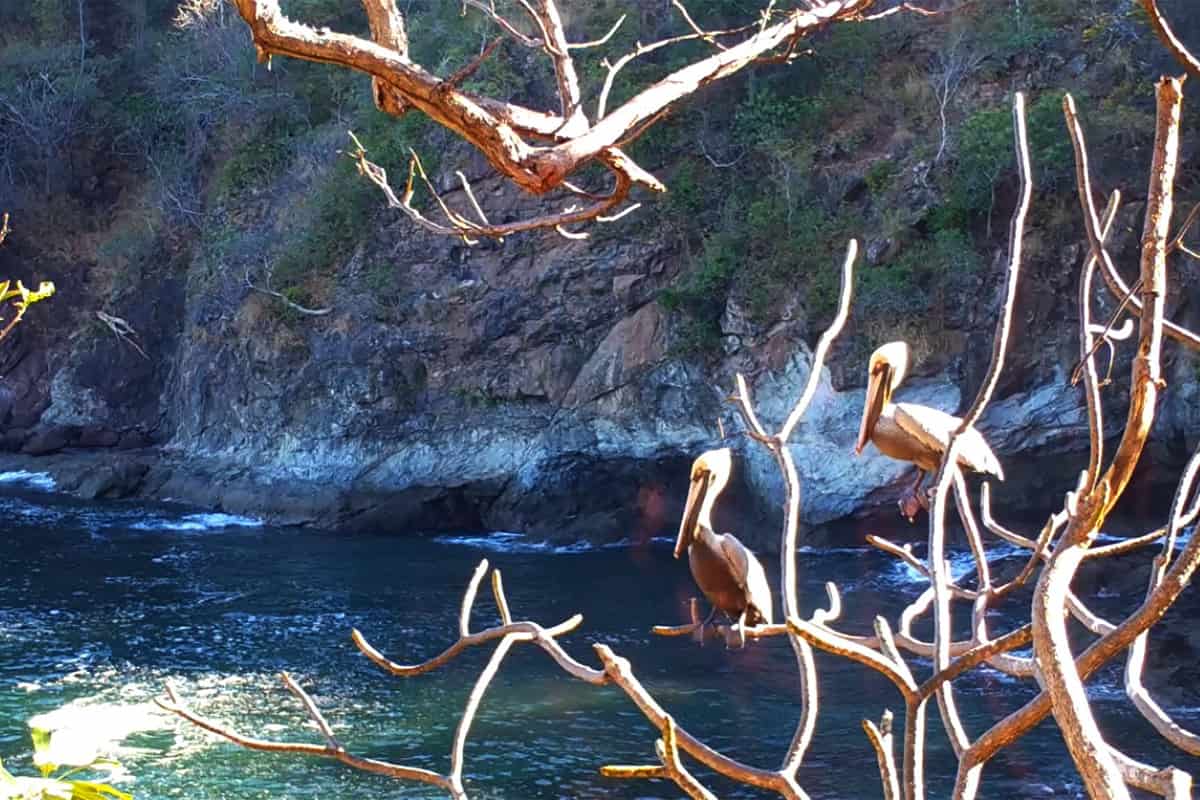What screams “I’m in Costa Rica!” more than standing on a tropical beach, watching a single file line of brown pelicans gliding on outstretched wings, catching the updraft from a breaking wave?
Not much.
Let’s learn more about the brown pelican.
The brown pelican (Pelecanus occidentalis) has a few Spanish names – buchón, pelícano pardo or simply pelícano.
Brown pelicans can be found in one of all of our favorite places in Costa Rica, the beach. While they’re present on both the Caribbean and Pacific coasts, they are more common on the Pacific, and the only breeding colonies are located on the western coast as well.
As beach-dwellers are wont to do, they eat a lot of fish. More than 90% of their diet is made up of fish. They catch these slippery morsels by flying 20 to 60 feet above the water keeping an eye out for a fish that’s no more than a pelican’s body length below the water.
Once they find a target, they dive down into the water, headfirst, and use their enormous beak to capture their prey. They then steady themselves on the water’s surface, spit out the extra water and wolf down their treat, before taking off again.
Brown pelicans have a handful of breeding colonies along Costa Rica’s Pacific coast. Two of the most important colonies are located on two islands, Isla Guayabo in the Golf of Nicoya and Isla Bolaños off of the coast of Santa Rosa National Park in northern Guanacaste. These islands are important nesting sites because of one key feature – they’re islands.
More importantly, they’re islands that are short on predators, so pairs of pelicans can make their pile-of-sticks nests on small shrubs or directly on the ground without a high level of danger of something scarfing down their eggs or chicks.
I’ve had the opportunity to work hands-on with brown pelicans during my years at a wildlife rescue center in Guanacaste. We were able to successfully rehabilitate and release some pelicans with minor injuries. One individual that I got to know particularly well came into the rehab center with a total of one wing.
Obviously not a candidate for release, this bird needed to find a permanent home in one of the center’s enclosures. The problem was, it refused to eat the sardines that were on offer, which meant that I had to spend several weeks carefully hugging its body, while popping a sardine in its voluminous beak and massaging the fish down its throat (otherwise it would immediately spit it back out at me).
After a while, it realized that it could just eat the sardines as I tossed them into its pool so we then enjoyed a more hands-off relationship.
Their seagoing, island-hopping ways make brown pelicans difficult for me to record with camera traps, but I’ve managed to capture a few interesting videos over the years. So, check out the video below and meet the brown pelican.
About The Author
Vincent Losasso, founder of Guanacaste Wildlife Monitoring, is a biologist who works with camera traps throughout Costa Rica. Learn more about his projects at: Instagram and facebook or by email.

